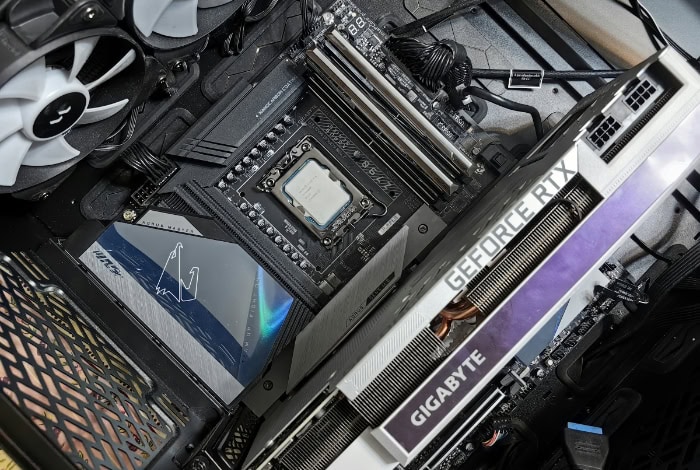What Is the Best Frame Rate for Gaming? A Full Breakdown

Few aspects of gaming spark as much debate as the elusive “best” frame rate. Whether you are marveling at lush open worlds or locked in a high-stakes firefight, frames per second (FPS) shape every moment on screen, influencing both visual fluidity and how quickly you can react.
Yet, pinpointing a single FPS target that suits everyone is practically impossible. From cinematic 30 FPS to lightning-fast 240 FPS and beyond, each choice comes with its own set of pros and cons tailored to specific hardware, genres, and personal preferences.
Frame Rate Fundamentals
Smooth and engaging gameplay relies on more than just impressive graphics or captivating storylines. Frame rate, often measured in frames per second (FPS), sits at the core of how a game feels and responds.
While the term FPS might appear purely technical, it directly impacts motion, player actions, and even competitiveness across genres.
How FPS Impacts Gameplay
A higher frame rate can make movements appear fluid, while low frame rates tend to introduce jagged motion or uncomfortable stutter. Fast-paced action titles benefit greatly from smoother frames since quick camera pans and rapid character movements look natural at higher FPS values.
Conversely, low FPS can cause noticeable visual disruptions, breaking immersion and making it difficult to track fast-moving objects or opponents.
Responsiveness is also tied closely to FPS. With higher frame rates, the delay between pressing a button and seeing the result on screen, known as input latency, is minimized.
Crisp controls allow for precise aiming, better reaction times, and an overall sense of control during intense moments. Reduced input lag can be a decisive advantage, especially in multiplayer environments where every millisecond counts.
Frame Time Explained
Frame time measures how long each individual frame takes to display on your monitor and serves as a hidden foundation behind FPS. For instance, running a game at 60 FPS means each frame is visible for roughly 16.66 milliseconds.
At 30 FPS, each frame lingers for 33.33 milliseconds. The shorter duration per frame at higher FPS creates smoother motion and less time between your actions and visual feedback.
Even small differences in frame time can become noticeable, especially during rapid movements or when multiple elements are shifting on screen. Consistent frame times help maintain a natural flow, while uneven delivery may cause the game to feel choppy or unresponsive.
For this reason, both average FPS and how steadily frames are delivered play equal roles in ensuring a satisfying gaming experience.
Optimal FPS Targets by Scenario

Selecting the right FPS for gaming is a balancing act between performance, enjoyment, and sometimes even competition. Your ideal frame rate often depends on the type of game you’re playing and your goals as a player.
Single-player adventures and casual sessions may not demand the blistering speeds required in high-stakes multiplayer arenas. Each scenario comes with its own set of expectations and standards that can influence not only how a game looks but also how it feels to play.
Casual and Single-Player Gaming
For many story-driven or casual experiences, a frame rate of 30 FPS remains the basic threshold for playability. Games running at 30 FPS can still look visually impressive, especially when developers prioritize visual effects and cinematic presentation.
However, movement and camera transitions may not feel as fluid, which becomes most noticeable in titles that involve quick reflexes or fast-paced action. Actions can appear slightly delayed, and motion blur can make it harder to follow rapid changes on screen.
Stepping up to 60 FPS brings a noticeable jump in smoothness and responsiveness. Animations become more lifelike, panning the camera feels more controlled, and gameplay actions register with gratifying speed.
Many players find 60 FPS to be the sweet spot, providing a blend of visual quality and smooth motion without demanding top-tier hardware. Nearly every genre feels better at this level, though the difference is especially obvious when switching back to a lower frame rate.
Competitive Multiplayer
The demands in online competitive play are much higher. Games in genres like first-person shooters and racing often push frame rate standards to 120 FPS or higher.
At 120 or 144 FPS, visual updates are delivered more frequently, allowing players to track opponents or projectiles with greater accuracy. Input lag drops further, granting every action a more immediate translation to the screen, which can make a major difference during high-stress moments.
Going beyond 144 FPS to 240 FPS or more offers additional improvements, though the perceived difference narrows at these extremes. Reaction times become razor-sharp, and motion clarity reaches its peak, factors that professionals and esports competitors rely on for even the slightest edge.
For the vast majority of gamers, however, the jump past 144 FPS is less dramatic and may be limited by hardware or monitor capabilities. Balancing frame rate targets with your system’s strengths and the style of play you prefer will ultimately yield the most satisfying results.
Hardware and Technical Synergy

Reaching your ideal frame rate involves more than game settings or personal preferences. Hardware choices, component balance, and the relationship between your system and display all shape how smoothly a game runs.
The right configuration ensures that the frame rate you aim for is both achievable and visually effective.
Monitor Pairing
A fast graphics card alone cannot deliver its full potential without the right monitor. Refresh rate, measured in hertz (Hz), determines how many frames a display can physically show each second.
For example, even if your game produces 144 FPS, a 60 Hz monitor will only display 60 different images per second, causing extra frames to be lost and sometimes introducing visual artifacts like screen tearing. Matching your in-game frame rate to your monitor’s refresh rate, such as pairing 120 FPS with a 120 Hz screen or 144 FPS with a 144 Hz one, creates a smoother and more visually pleasing experience.
Monitors equipped with adaptive sync technologies, such as G-Sync or FreeSync, further reduce tearing and stuttering by keeping the display and graphics card in sync.
Bottleneck Management
Achieving stable and high frame rates depends on the relationship between your CPU and GPU. If one component is significantly weaker than the other, it can create a bottleneck that limits performance regardless of other upgrades.
In graphically demanding titles, the GPU often takes the brunt of the work, while in games with complex physics or lots of on-screen activity, the CPU may become the limiting factor. Optimizing both components for your favorite games, and closing performance gaps where possible, ensures a consistent frame rate and minimizes sudden spikes or drops.
Graphics vs. Performance
Striking a balance between visual quality and smooth performance is a common consideration for gamers. Settings like shadows, anti-aliasing (AA), reflections, and texture detail all affect how demanding a game is on your hardware.
Reducing or tweaking these options can have a significant effect on frame rate. For example, lowering shadow quality or turning off certain post-processing effects can quickly boost FPS, especially on mid-range or older systems.
The aim is to maintain a visually appealing experience without compromising the responsiveness or fluidity that makes games enjoyable. Adjusting settings until you reach your target FPS, while keeping visuals at a level you enjoy, is often the most effective strategy for most players.
Debunking Common Myths

Discussions about frame rate often ignite strong opinions and persistent myths. Some beliefs are rooted in outdated information, while others misunderstand how vision and technology actually interact.
Separating fact from fiction provides clarity and helps set more realistic expectations for gamers seeking to improve their experiences.
“Human Eye Limitation”
A frequent claim is that the human eye cannot perceive any improvement beyond 60 frames per second. While 60 FPS certainly feels smooth compared to lower frame rates, human vision can detect subtler changes well above this mark, especially when movement is rapid or gameplay is highly dynamic.
Faster frame rates reduce motion blur and provide sharper visuals during quick camera pans or character actions. Many players notice the difference when moving from 60 FPS to 120 FPS as motion appears more fluid and the game world feels more connected to their actions.
The upper limits may vary individually, but the benefits of increased frame rates remain clear to most who experience them, particularly in fast-paced genres.
Frame Pacing Over Peak FPS
Not all smoothness comes from hitting the highest possible frame rate. Consistency in frame delivery, known as frame pacing, matters just as much, if not more, than headline-grabbing peak FPS numbers.
A consistent 60 FPS, with each frame appearing at regular intervals, delivers a more pleasant experience than fluctuating wildly between 50 and 90 FPS. Uneven pacing can create judder and visible stutter, breaking immersion even when average FPS seems high.
Gamers who focus on stable frame times often report a greater sense of control and a smoother visual presentation, proving that reliability can outperform raw numbers.
Competitive Stats
High FPS is not just about visual appeal; it can also impact performance, particularly in multiplayer games. Players who run games at 120 FPS or higher tend to record better kill/death ratios compared to those limited to 60 FPS or below.
More frequent visual updates translate to faster reaction times and better precision, both of which are crucial in split-second scenarios found in shooters or racing games. While other factors like skill and strategy always matter, the technical edge granted by higher frame rates has become a recognized advantage among competitive gamers.
Those looking for improved performance may find that even incremental boosts in FPS can help sharpen their play.
Contextual Recommendations

Selecting the right frame rate is rarely a one-size-fits-all choice. Recommendations shift depending on what types of games you play, the power of your hardware, and the platform you prefer.
Tailoring your settings within these contexts can help you get the most enjoyable and responsive gaming experience possible.
Game Genre Guidelines
Game genre greatly influences the optimal FPS target. Role-playing games (RPGs) and strategy titles typically emphasize story, atmosphere, or complex tactics rather than lightning-fast reactions.
For those experiences, 60 FPS hits a sweet spot, offering smooth motion and pleasing visuals without excessive hardware requirements. Action-heavy genres like shooters and racing games place a higher premium on both fluidity and responsiveness.
Here, pushing frame rates to 120 FPS or higher allows for rapid visual updates and tighter input, which directly impact your ability to track targets or maneuver at high speeds. The faster the game moves, the more you’ll appreciate the benefits of those extra frames.
Hardware Tiers
Every gamer’s setup comes with its own capabilities and constraints. Budget systems often settle between 30 and 60 FPS. At these levels, careful settings adjustments can still deliver a smooth and pleasant experience, particularly in less demanding or slower-paced games.
High-end rigs, equipped with powerful graphics cards and fast processors, open the door to 144 FPS or more. Such performance is especially rewarding in competitive genres, where every frame can contribute to sharper visuals and swifter reactions.
Matching your expectations to your system’s strengths leads to both better performance and a more enjoyable gaming session.
Special Cases
Certain scenarios call for unique frame rate considerations. Virtual reality (VR) relies on high frame rates, usually 90 FPS or above, to avoid motion sickness and keep experiences believable and comfortable.
Conclusion
No single frame rate can claim the title of “best” for everyone. Your ideal FPS lies at the intersection of your gaming goals, the capabilities of your hardware, and the genres you enjoy most.
Fast-paced competitive titles often reward higher frame rates, while story-driven adventures may prioritize visual fidelity over absolute smoothness. The most important step is to experiment within your own setup, trying different settings to see what feels right for you.


